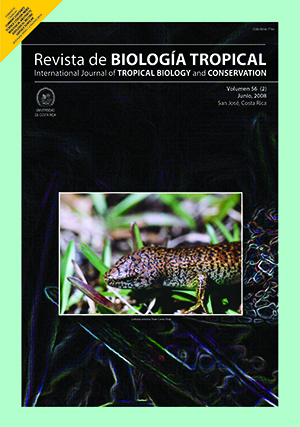Abstract
Desmoncus orthacanthos is a Neotropical climbing palm that resembles rattan and therefore has similar potential applications. The genus Desmoncus (subfamily Arecoideae, subtribe Bactridinae) is distributed throughout the Americas, from Veracruz, Mexico, to Brazil and Bolivia. The anatomical characteristics of its support tissue have not been thoroughly studied, although some observations from Central American artisans suggest that the stems collected from undisturbed sites possess better characteristics; these include a good capacity to withstand bending without breaking (i.e. higher fracture strength than plants from disturbed sites). Stem samples were collected from individuals from disturbed and undisturbed sites, at three points along the length of the stem (basal, medium and apical). Collections were made of one ramet from five individuals (n=5) at both sites. Each ramet was divided into three sections: basal, from soil surface to a height of 0.5 m; medium, from a height of 0.5 to 5.0 m; and apical, from a height 5.0 to 10.0 m. An anatomical analysis including vascular bundles, parenchyma elements and fibers was performed in the radial direction and also along the longitudinal direction of the stems. The amount of vascular bundles was greater for samples from undisturbed site stems; the amount of parenchyma cells differ between samples from both sites and the amount of fibers was greater for samples from disturbed site stems. The anatomical structural dimensions were smaller for samples from the undisturbed site stems. These findings partially confirm the artisans? belief and supports the conclusion that microclimatic conditions affect plant anatomical structure.##plugins.facebook.comentarios##

This work is licensed under a Creative Commons Attribution 4.0 International License.
Copyright (c) 2008 Revista de Biología Tropical
Downloads
Download data is not yet available.


